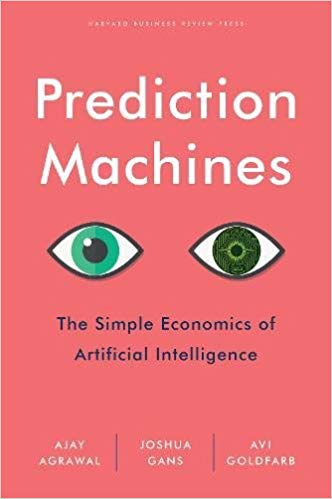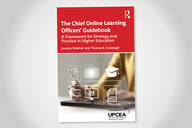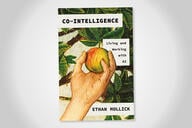You have /5 articles left.
Sign up for a free account or log in.
 Prediction Machines: The Simple Economics of Artificial Intelligence by Ajay Agrawal, Joshua Gans and Avi Goldfarb, published in April 2018.
Prediction Machines: The Simple Economics of Artificial Intelligence by Ajay Agrawal, Joshua Gans and Avi Goldfarb, published in April 2018.
What would your university do differently if you could go back to Jan. 23, 1990? That date was exactly three years before the first internet browser, NCSA Mosaic, was released. If you had a three-year warning that the internet was about to change almost everything in higher ed, what would you have tried to push your school to do?
Would you have focused on how the web was about to change marketing, outreach, communications and admissions? Or perhaps you would have pushed to build an online education unit?
Surely, if you saw the internet coming, you would run around like a crazy person on your campus telling anyone who would listen that in a few years life would never be the same. That the time to get ready for the coming internet tsunami (remember we are talking 1990) is now.
We are in a similar place with artificial intelligence.
AI is going to change almost everything about how higher education runs. We just don’t know it yet.
Being an academic, the only way I know to convince anyone of anything is to assign them some homework. The closest I get to evangelizing my ideas is to recommend a book.
Luckily, I think that I’ve found the perfect book to motivate campuswide action around the coming AI storm. Not surprisingly, this book was written by a bunch of economists.
Prediction Machines is not about AI in higher education. The book does include some material on how AI might impact an M.B.A. admission process. Higher ed is mentioned, but it is not the theme of the book. What Prediction Machines provides is a concise, workable and actionable description of how narrow artificial intelligence works. Their key insight, which is reflected in the title of the book, is that decisions are all about predictions.
AI systems now power everything from credit card protection to autonomous navigation systems. The more accurately that an AI system can predict if a purchase is fraudulent, or if the pedestrian is likely to step into the road, the more useful, the more valuable the technology will be.
Prediction Machines takes the reader through the strengths and weaknesses of artificial intelligence systems by describing a large number of scenarios in which AI is currently or will soon be deployed. The authors then try to make sense of what the impact of AI will be on companies, workers and the economy at large.
In reading Prediction Machines, it is easy to feel that AI is changing every knowledge industry but higher education.
For a thought experiment, let’s pretend that you happen to read this review. You are intrigued enough to download/purchase/borrow Prediction Machines. The book is engaging, informative and in parts even funny. (Or as amusing as economists can hope to be.) You will be happy you invested the time.
Now you’ve read Prediction Machines, and you are having something of an “oh shit” moment. You are convinced that this AI thing is a big deal. That if your school does not get going, it is going to miss an internet-size once-in-a-generation moment. You also start to think about how the institutions that your university competes with for students, funding, faculty and prestige might have people on campus who get the potential of AI. Being ahead of the game would be good. But it would be awful to be behind everyone else.
What should you do?
The classic higher ed response to any new external force is to do nothing. Or at least nothing for a long time. And then everyone will run around making lots of bad decisions. So don’t do that.
Instead, you should form a committee. An AI committee. Your AI committee should be charged with three tasks. These three tasks can be summarized as PDA: prediction, data and action.
Task No. 1: Predictions
The AI committee should make a list of everything that happens at the university that relies on predictions. This sounds like a straightforward task. But it is quite hard.
We can come up with some prediction-related actions and events pretty quickly. We need to make predictions about which academic programs will thrive. About which majors and degrees will attract the best students. We need to make predictions about how to engage in outreach and marketing to students.
The point is to come up with as many decisions or actions at the institution that hinge on prediction as possible. Try to game out some scenarios of what would change if the accuracy of the predictions improved.
Task No. 2: Data
The second task that the AI committee should tackle is to figure all the potential data sources that are in some way connected to the prediction-related decision list. AI systems depend on data. The amount and quality of the data will determine the robustness of the AI.
What your AI committee will quickly find is that universities, by and large, do a terrible job when it comes to capturing and utilizing data.
Our industry’s relative inability to leverage data, as compared to other knowledge industries, is the result of many factors. Some of the reasons for our data shortfalls are good, such as our commitment to privacy protections. Some reasons for our higher ed data deficiencies are less defensible. Universities are decentralized institutions. Resources for collecting, analyzing and utilizing data are scarce.
Still, a commitment to AI will mean a commitment to data. As the authors of Prediction Machines point out, any strategic commitment requires trade-offs. To invest in the hard work of creating policies and procedures around the use of data, an institution will need to stop doing some other things. To achieve the gain of future AI data-driven prediction advances, some current operation or service will need to suffer.
Task No. 3: Action
The third action for the AI committee is to figure out what action the institution should take. The committee needs to make some informed recommendations about concrete next steps. These recommendations will be based on the list of predictions that can be improved by AI and the list of data sources on which the AI will depend.
The action recommendations can include the scope of investment, possible organizational changes and potential partners. These action recommendations should be informed by a scan of the existing AI ecosystem in higher ed and related industries.
Will any of this happen?
The problem with higher ed AI is that everyone talking about AI is trying to sell us something. The AI evangelists are consultants and companies that will profit from institutional investments in this space.
We are desperately short of independent and unbiased analyses of the impact of AI on higher ed.
Reading, and sharing, Prediction Machines is a good place to start a campuswide AI discussion.
What other books on AI would you recommend? Do you also see the coming of AI as important to higher ed as the internet? Are you running around your school trying to get folks to focus on AI? What are you reading?




